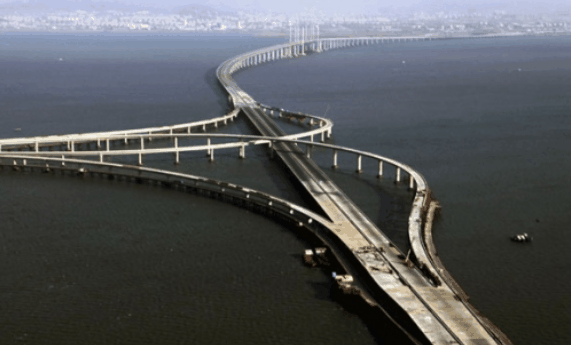
In Sunday’s weekly Economic Note, Australian Treasurer, Wayne Swan, reaffirmed his belief in the underlying strength of the Chinese economy and expressed his confidence that China can continue growing solidly even in the face of sluggish growth in the US and Europe [my emphasis].
I’ve been asked a number of times in the past week whether China’s economy will likely be dragged down if its export markets in Europe and North America dry up. Of course like Australia, China is not immune from global developments. But I think there are good reasons to be optimistic about the continued growth of the world’s most populous nation. The image of China as the world’s factory churning out goods for the rest of the world overlooks many of the changing dynamics inside the economy.
Firstly, as it proved during the GFC, China has the policy flexibility to fire up its domestic engines of growth if external conditions fall sharply. Secondly, what’s often not appreciated is that capital investments, rather than exports, are increasingly driving China’s economy. In fact, in recent years about half the nation’s growth has come from building things like roads, bridges and homes. In the past 30 years, investment as a share of GDP has risen from 35 per cent to almost 50 per cent. And thirdly, rising living standards are creating new ranks of middle-class consumers that are driving demand. In 1980, the income of the average Chinese citizen was 2 per cent that of an average American. Today it’s closer to 16 per cent. And that will only continue to increase. This has implications not just for China’s economic growth, but for Australia’s as well.
The new ranks of middle-class consumers in China and the rest of Asia will increase demand for more than just our mineral wealth. It will also benefit Australia’s tourism operators, education providers and manufacturers of high-end goods. A staggering fact is that the middle class in Asia is expected to be bigger than that in the rest of the world combined by the end of the decade. It won’t be all smooth sailing from here, and certainly China has more work to do to further increase domestic demand, but the underlying trends in our region are positive not just for the next few years, but the next few decades.
Mr Swan’s unwavering optimism about China’s ability to engineer growth irrespective of the external economic environment is understandable. Like it or not, Australia has hitched itself to the fortunes of the Chinese economy, and any significant slowdown will hit the Australian economy particularly hard, ensuring significant voter backlash against the incumbent government.
The problem for Mr Swan is that China’s ability to once again stimulate growth in the event of another protracted global slowdown appears to be limited.
According to Richard Martin, managing director of Singapore-based business analysts IMA Asia:
“China can’t deploy the fiscal and monetary firepower that it unleashed in late 2008 with its 4 trillion yuan ($600 billion) spending campaign.”
Its first big stimulus left some messes, he said, including a property bubble, overspending on infrastructure, heavily indebted local governments and a jump in non-performing loans.
He said China could not correct those issues while at the same time unleashing a new stimulus.
“Under these conditions, China’s growth may drop towards 6 per cent, although it is unlikely to acknowledge anything under 8 per cent,” he said.
Mr Martin warned Australia could take a big hit, with housing, infrastructure and lending likely to suffer from China’s corrections.
“The first two of these will cut demand for iron ore and the third will make life difficult for China’s private sector firms.”
Similar sentiments were expressed recently by Reuters’ Emily Kaiser and Koh Gui Qing:
China is still nursing a hangover from its 2008 stimulus spending spree and may be reluctant to kick off another big round, leaving less potent options on the table should the global economy tilt toward a cliff…
China’s fiscal firepower is not in doubt. With $3.2 trillion in reserves and low public debt, China could afford to kick up spending, but the side effect would be worsening inflation when prices are already rising too fast for comfort.
Beijing is particularly sensitive to inflation because relentlessly rising prices can stoke social unrest, which could be dangerous for the Communist Party.
Besides, the last round of stimulus in 2008 caused more than a few headaches that linger today. Beijing encouraged banks to lend freely to government projects such as railways, airports and roads. Some of the loans have soured, and local government defaults now pose one of the biggest threats to China’s growth.
Local government liabilities amount to nearly 27 percent of China’s total annual output, so if the state is forced to mop up those bad loans its deep pockets would look a bit more shallow.
That means China would most likely rely on more modest measures if the economic outlook deteriorates. Possible steps include cutting taxes for small- and medium-sized businesses, ramping up investment in affordable housing, altering bank lending rules to get more money into the hands of smaller companies, and lowering interest rates.
“We are still digesting the mess of the 2008 stimulus package,” said Yu Xuejun, local head of China’s banking regulator in Jiangsu province. “It’s unrealistic to hope that China will come to the rescue of the global economy this time”…
Finally, Professor Barry Eichengreen last week expressed similar reservations about China’s ability to undertake another round of mass stimulus in the event that the global economy slows, as well as the dire implications for commodity suppliers, like Australia:
How worried should Asia be [about a global slowdown]? The situation is far less manageable than it was in 2008–9. Then it was possible for China to pull out all the stops and unleash a massive fiscal stimulus. To support investment spending, it could instruct the banks to lend like there was no tomorrow. Today Chinese policy makers have less room for maneuver. With inflation already running at 5 per cent, they are anxious to rein in bank lending. Credit policies that inflated further an already expanding property bubble would not be helpful. Then there are worries about the balance sheets of financial institutions, like the credit cooperatives that financed local government’s infrastructure projects. Standard & Poor’s has already warned that a third of their loans may have to be written off. More generally, analysts are concerned that the public-sector debt burden, considering all levels of government, is higher than suggested by the headline figures and higher than is healthy for an emerging economy.
Add it up and it is clear that the Chinese authorities will not be able to respond as vigorously as in 2008–9. Were China’s exports to the West to drop off as sharply as they did then, there would be no way that the government could substitute a commensurate amount of domestic spending. Chinese growth would fall. The implications of other economies that sell parts, components and, above all, raw materials to China would not be pretty.
As shown by the below chart, the last time Western nations were in recession, declining exports lopped almost 3% from China’s GDP. Thankfully, the Chinese Government was successful in stimulating its economy via fixed asset investment, which peaked at a whopping 90% of GDP in 2009:
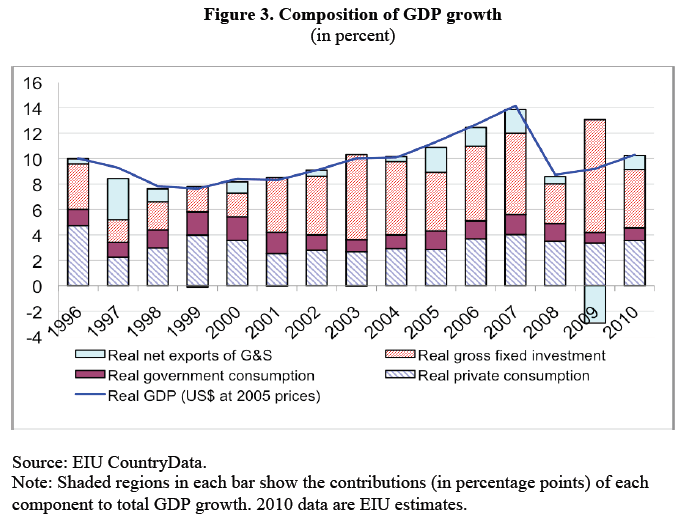
Obviously, if the global economy takes another turn for the worse, and the Chinese authorities are unable to undertake another massive stimulus program, then China’s growth would slow significantly, reducing demand for Australia’s commodity exports. And with this reduced commodity demand, Australia’s terms-of-trade – which has risen longer and harder than other commodity producers (see below chart) – could fall precipitously.
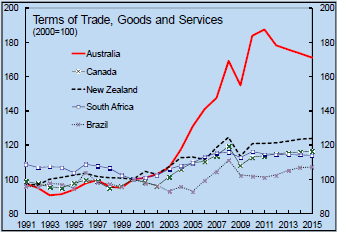
There are a number of possible implications arising from a sharp fall in commodity prices (terms-of-trade) for Australia, none of them favourable. First, national income would fall, reducing the Government’s tax take, and sending the Australian dollar sharply lower (see below chart).
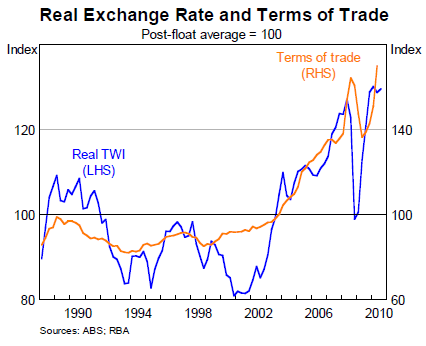
Mining investment – which is now at record highs and expected to grow further (see below chart) – could also dry up, crimping Australia’s GDP growth.
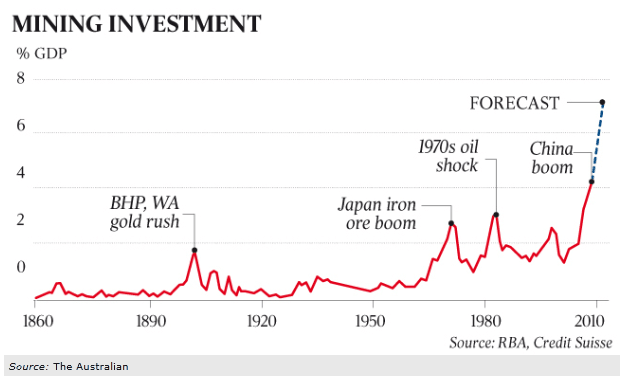
Finally, Australia’s banks, which have borrowed heavily offshore to fund the housing market, might once again find it extremely difficult to roll-over their maturing foreign borrowings. Only, unlike in 2008, the Australian Government might not be in the position to guarantee their debt given the significant other drains on the budget from diminishing tax receipts and rising welfare payments from increasing unemployment. Obviously, any contraction of credit would also have an adverse effect on house prices.
Put simply, all of the positive effects on employment, incomes, growth and the Government’s fiscal position received by Australia over the past decade could unwind dramatically.
For the sake of the Australian economy, we should all hope that Mr Swan’s unwavering optimism about the Chinese economy is not misplaced. Otherwise the Australian economy could face an extremely challenging period ahead.

